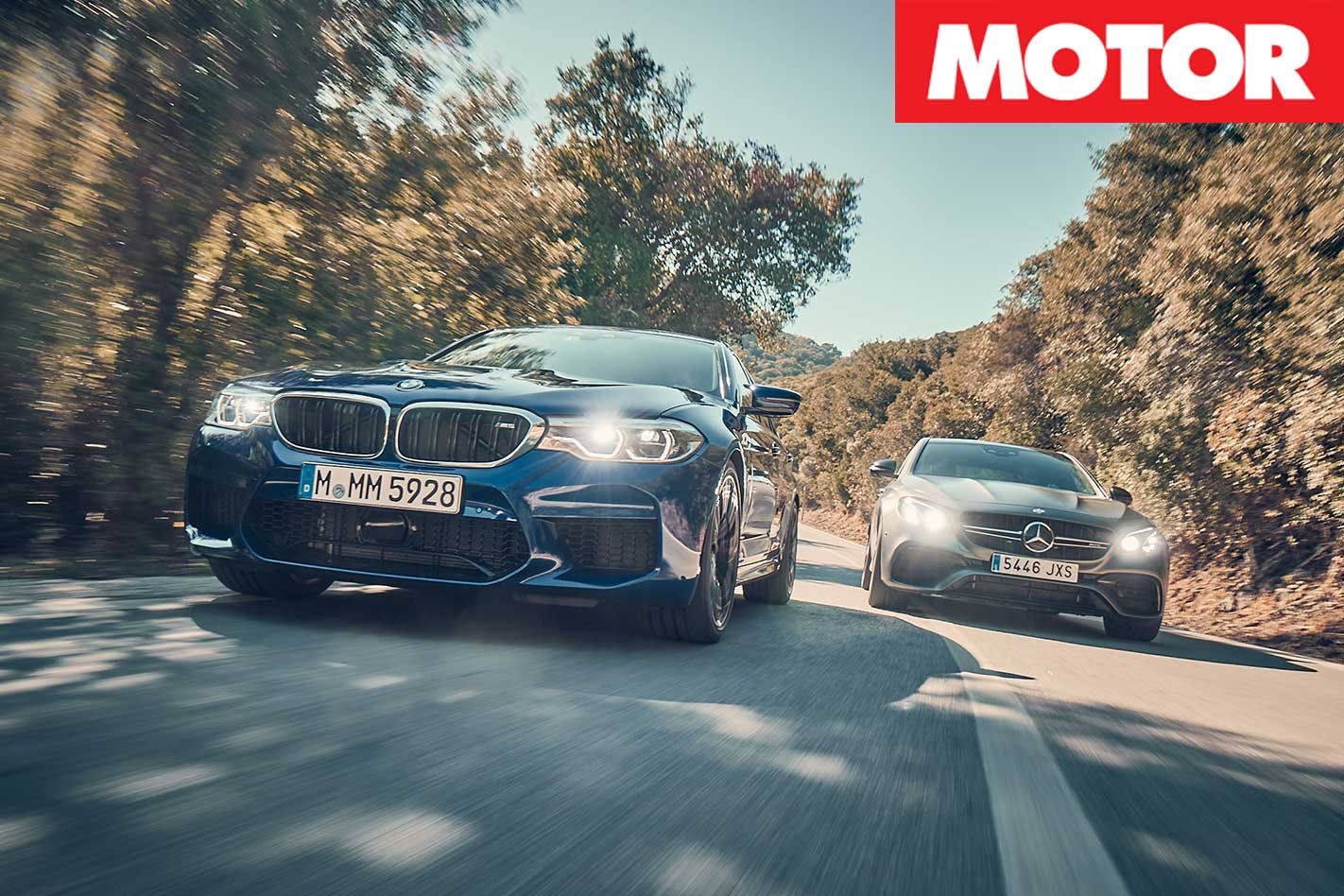Welcome to the latest instalment of the M5 versus E63 battle for the title of world’s hottest sedan.
However, this duel now plays out with revised terms. BMW, like Mercedes-AMG did before it, has decided to join the four-wheel drive fraternity where its 441kW and 750Nm must be converted into sure-footed progress. Bavaria and Affalterbach are on an equal, twin-turbo V8 footing.
Visually, the team within the M Division have created a subdued fighter. Wider wheels, mildly flared shoulders, more intakes, myriad aero aids, LED eyes and four sizeable tailpipes sum up the mean, but not menacing visual DNA. The M5 is still more sleeper than boisterous brawler, unlike the 450kW/850Nm E63 S, but it’s easy to spot the details that reveal the sixth-gen F90’s intent.
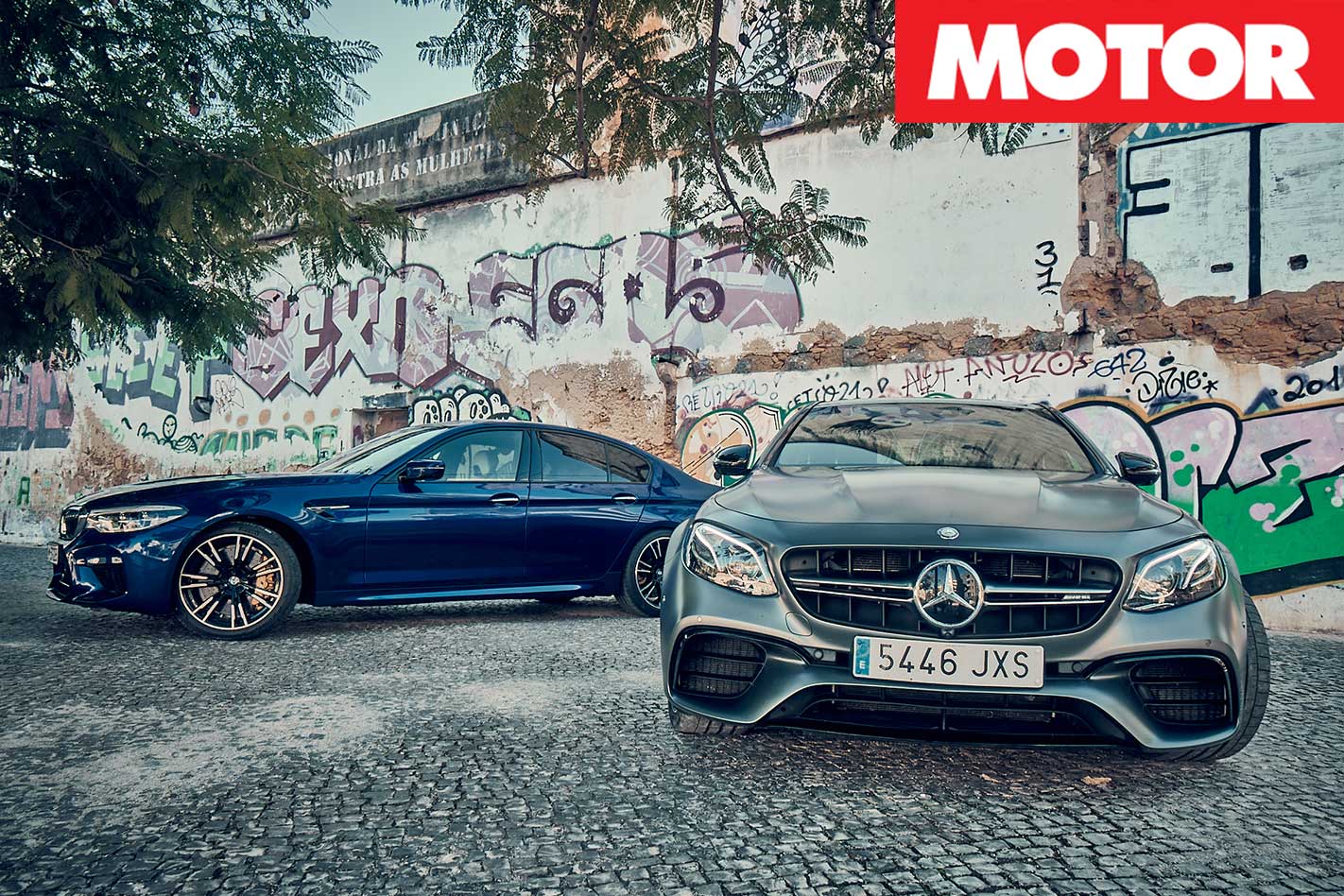
Allaying our fears is the fact that you can send all the grunt rearwards, it’s just that the front axle is there to help assist getting all the oomph to the road more of the time. Transitioning between four- and two-wheel drive modes is progressive, smooth and imperceptible.

However, it’s time to put the theory into practice. Due to a long absence of rain at Estoril Circuit in Portugal, the dusty, dry tarmac is sanded down to primer, so grip is limited. Even with all the stability nannies at full alert, the rear ends of these super sedans on steroids keep wriggling, fidgeting and twitching under pressure.
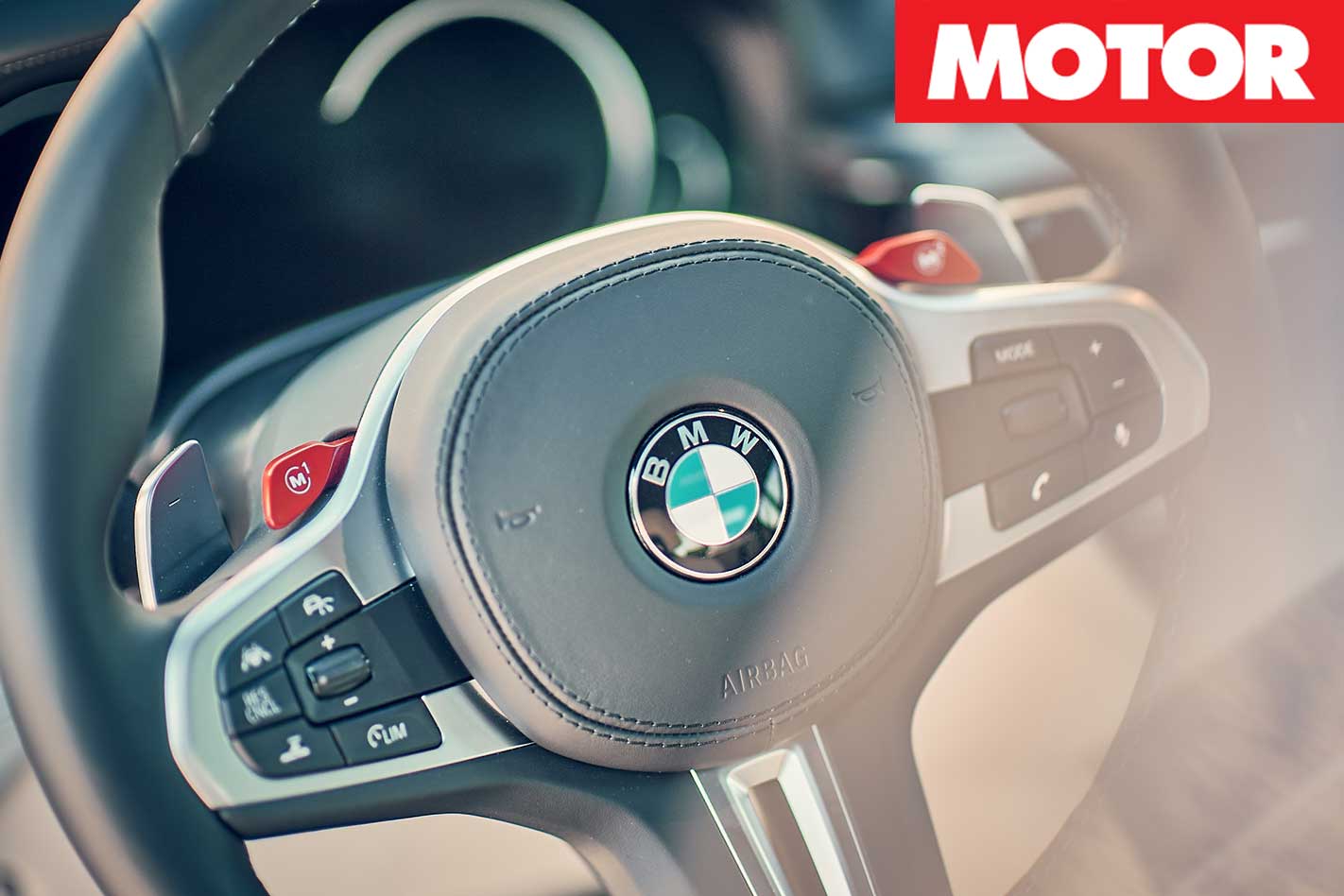
With no DSC and 4WD in Sport, the new M5 is at its very quickest. The exit speed out of fast corners is absolutely mind-boggling, the underlying rear bias remains a factor all the way into triple-digit territory, while traction and grip is epic. When all the M5’s might is sent rewards, the tyre-frying show returns.
Satisfying the urge to play appears to be the number-one priority. However, in order to burn rubber in these two wild things, we must first select the correct settings. The more hardcore your ambition, the deeper you must dive into the menu underworld. To satisfy the child inside, pulling out all stops in either steed is eye opening. After all, children like toys. Even if these toys happen to need a fresh set of rear hoops after only six hot laps of Estoril.
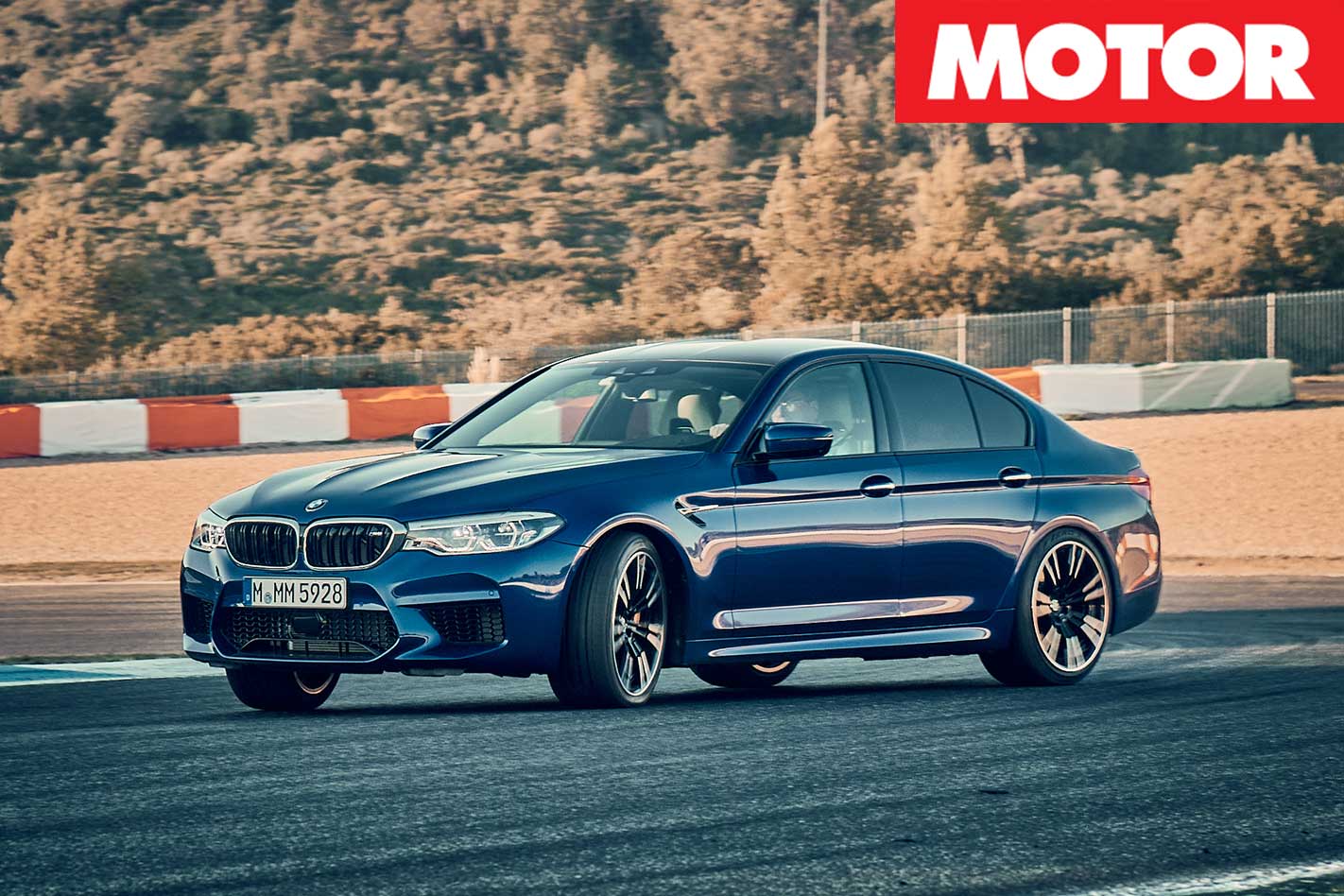
In Race mode, with the ESP switched off and the transmission in manual, all the power and torque is diverted to the rear wheels only – which in turn makes them yell for help and send smoke signals into the Portuguese sky. Up to 120km/h, it’s on the driver – and only the driver – to tame the 450kW beast. Beyond that marker the front axle rejoins the party. In contrast to the mega Merc, 2WD is not speed governed in the M5.
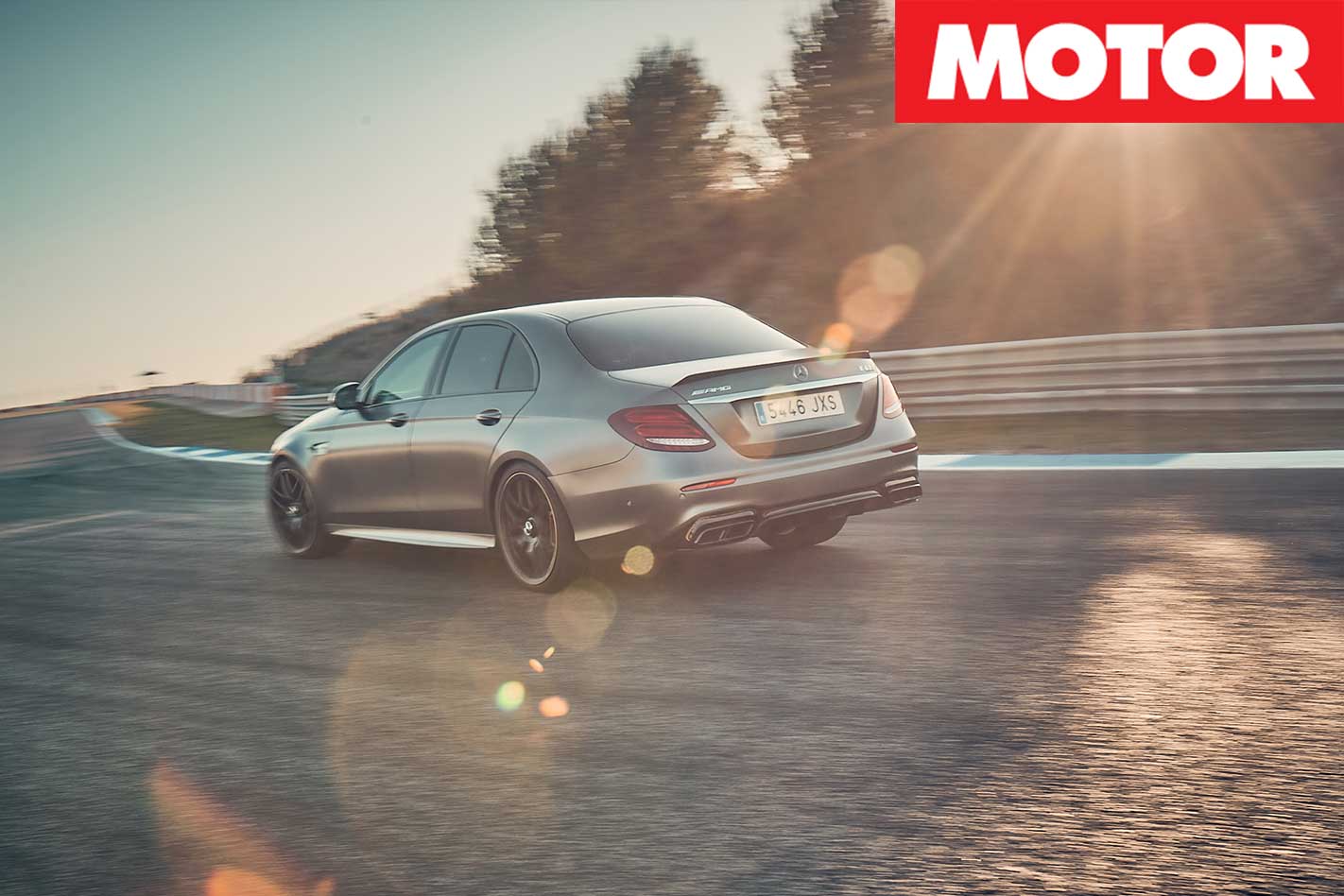
In the 0-200km/h dash, the M5 edges the E63 S, claiming just 11.1sec as opposed to 11.5 for the Merc. How come? Because the longer-legged nine-speed transmission fitted to the AMG makes one more upshift.
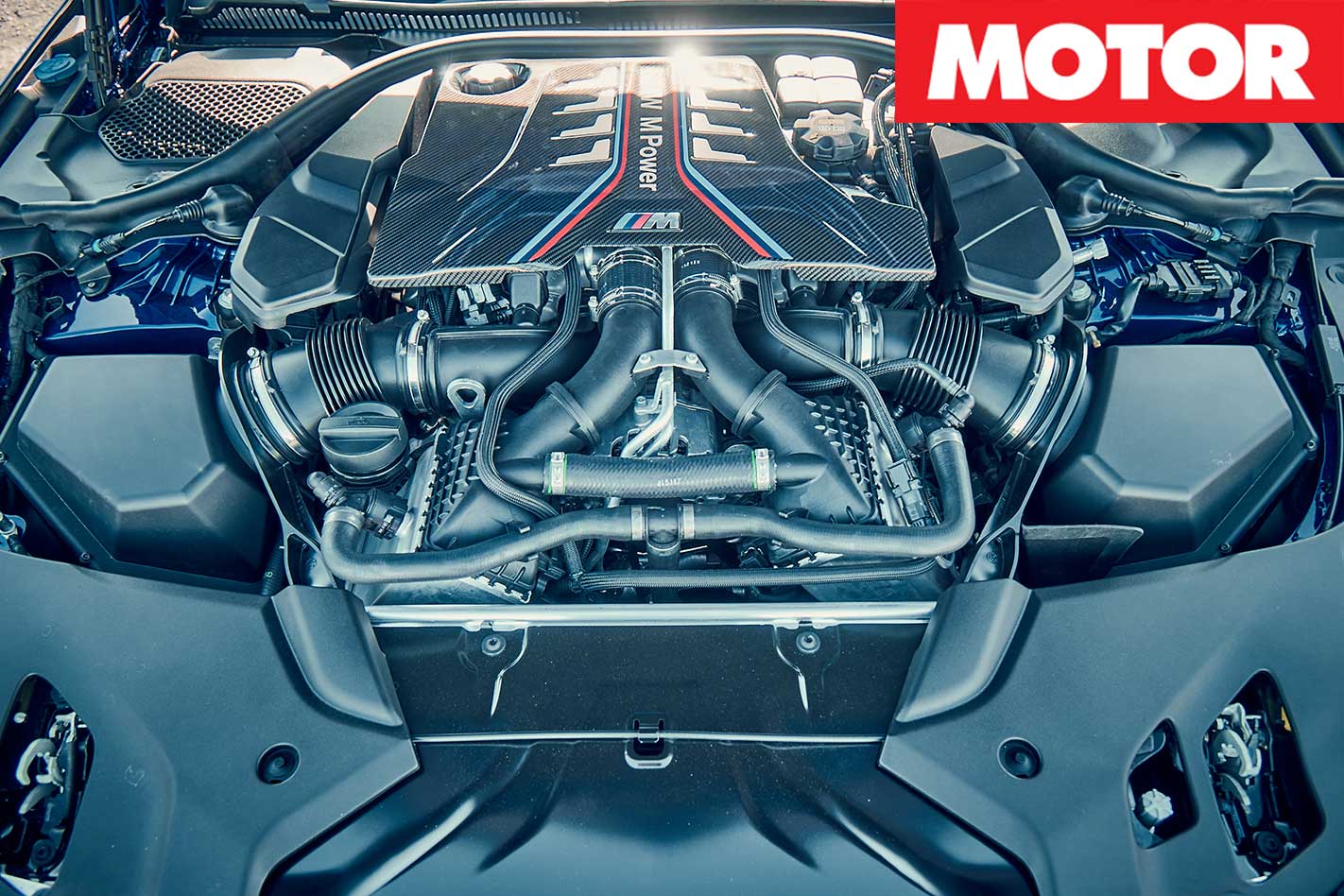
It’s not only the absolute stopping power that makes a big difference, but the constant pedal pressure and travel as well as the complete absence of fade. As far as the brake balance is concerned, the blue car performs on the same high level as the grey car. In the final analysis, it’s primarily the tyres which limit the deceleration potential, not the rotors or the calipers.
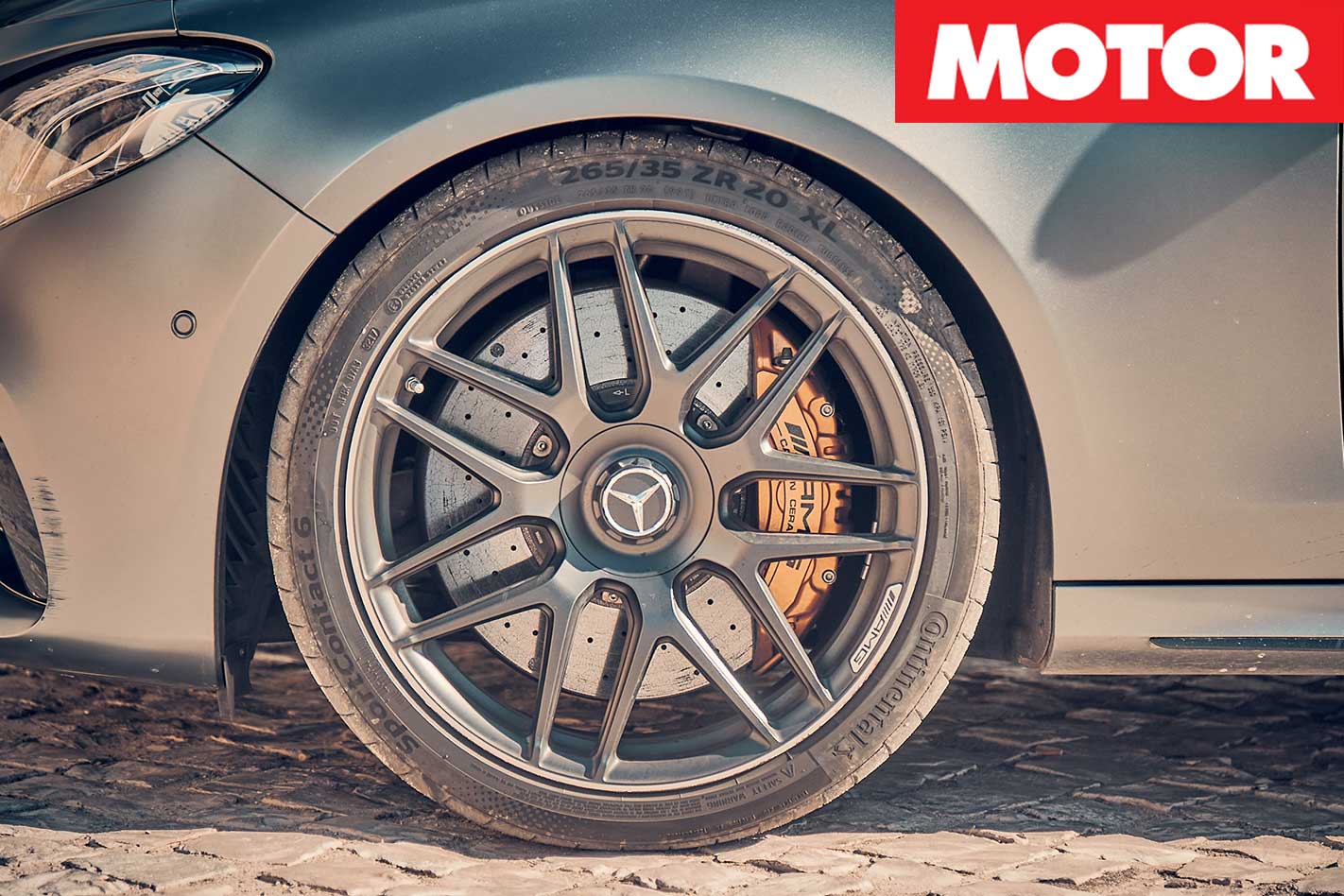
Wind on progressively more, and the feedback starts to blur a touch. When the tail eventually swings round, the steering response is quite light. In a nutshell, it’s a system that, sometimes, seems to be a bit too clever for its own good. Ultimately, the tiller in the M5 is more linear, and its response has more depth. Advantage BMW, but not by much.
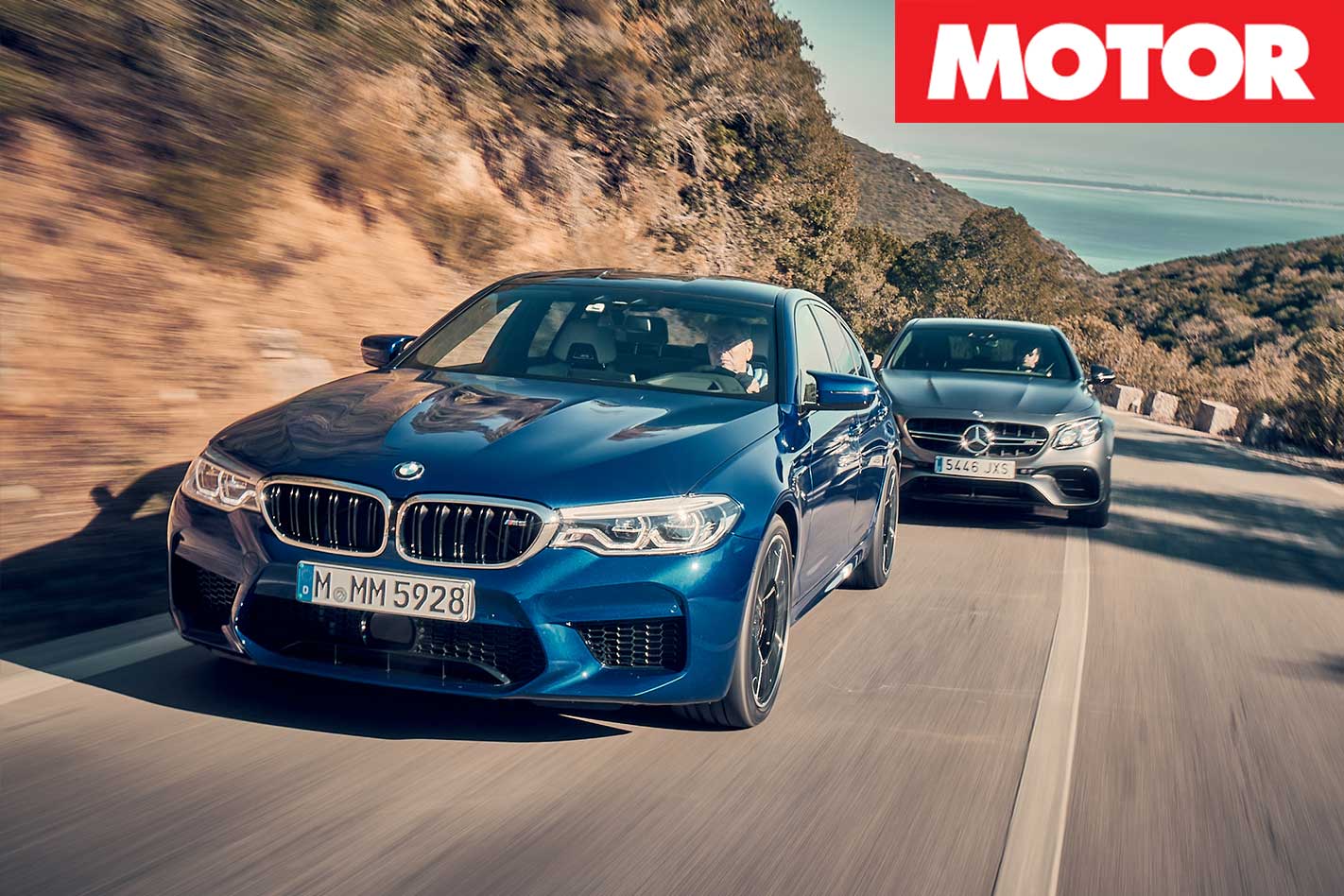
While the BMW’s Pirellis are evenly worn down to the indicators, the AMG’s Contis show an asymmetrical degeneration from the crown area all the way to the outside shoulder; more so at the rear than the front. This is allegedly down to the more aggressive suspension setup, which spices up toe-in and negative camber.
In theory, such an arrangement allows higher cornering speeds. In reality, the advantage expires at the breakaway point where grip lets go rather promptly. You can of course overdrive this peculiarity by stepping hard on the loud pedal.
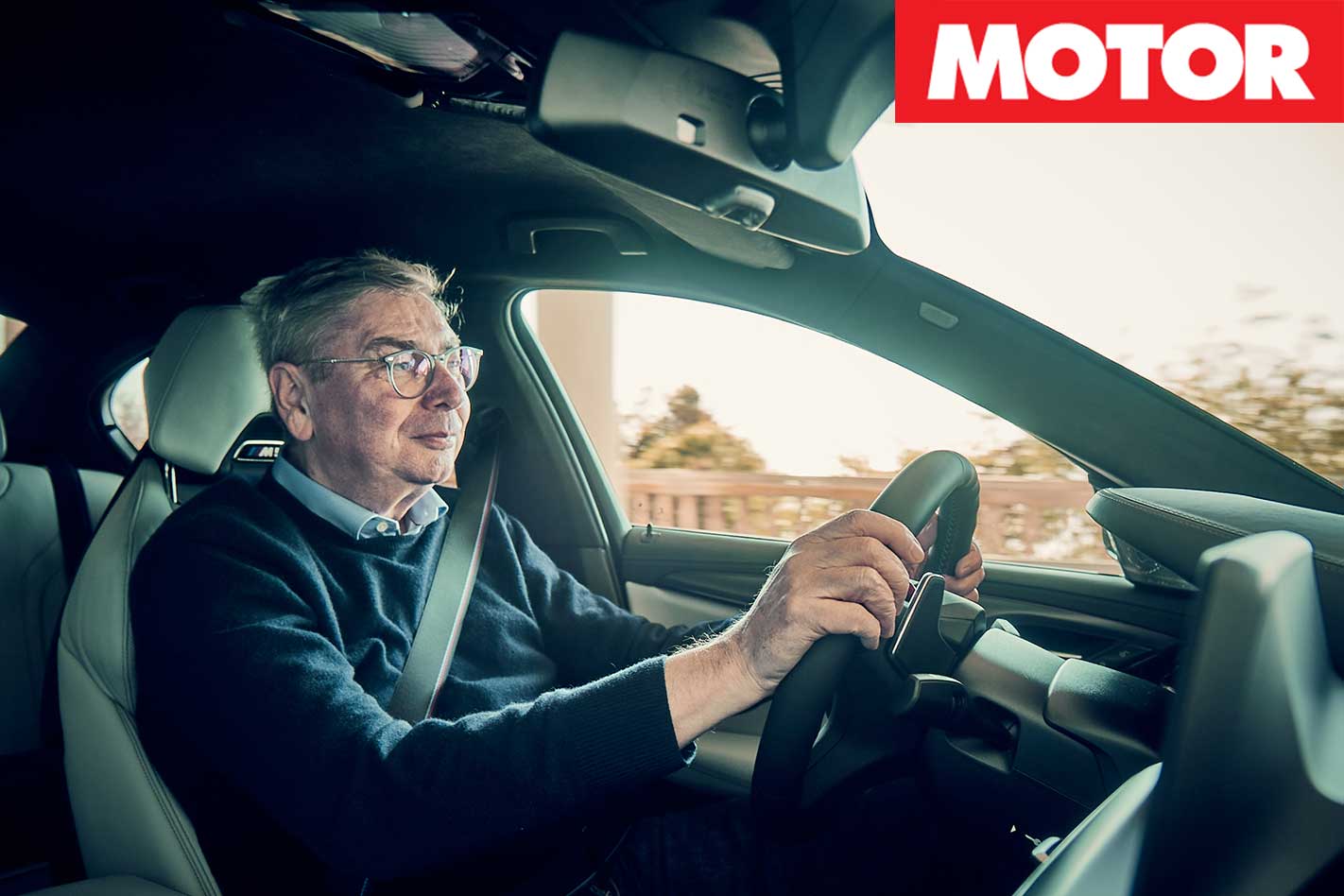
Even though the Mercedes is equipped with new triple-chamber air suspension, any trace of cushiness is being absorbed by the firm dampers – and that’s before you select Sport or Sport Plus. The BMW offers a broader span of calibrations from reasonably comfortable to positively firm. It is the slightly less radical of the two contenders, sharp yet more accessible in varying conditions.
When it comes time to sign the cheque, you may be surprised to find that the two differ on price. The E63 S is the heavy hitter at $239,611 and the M5, a comparative bargain, is $199,900 if you’re lucky enough to get one. Conversely, you can step down to the 420kW/750Nm E63 for $209,611 or step up to the $229,900 M5 First Edition (no power upgrade).
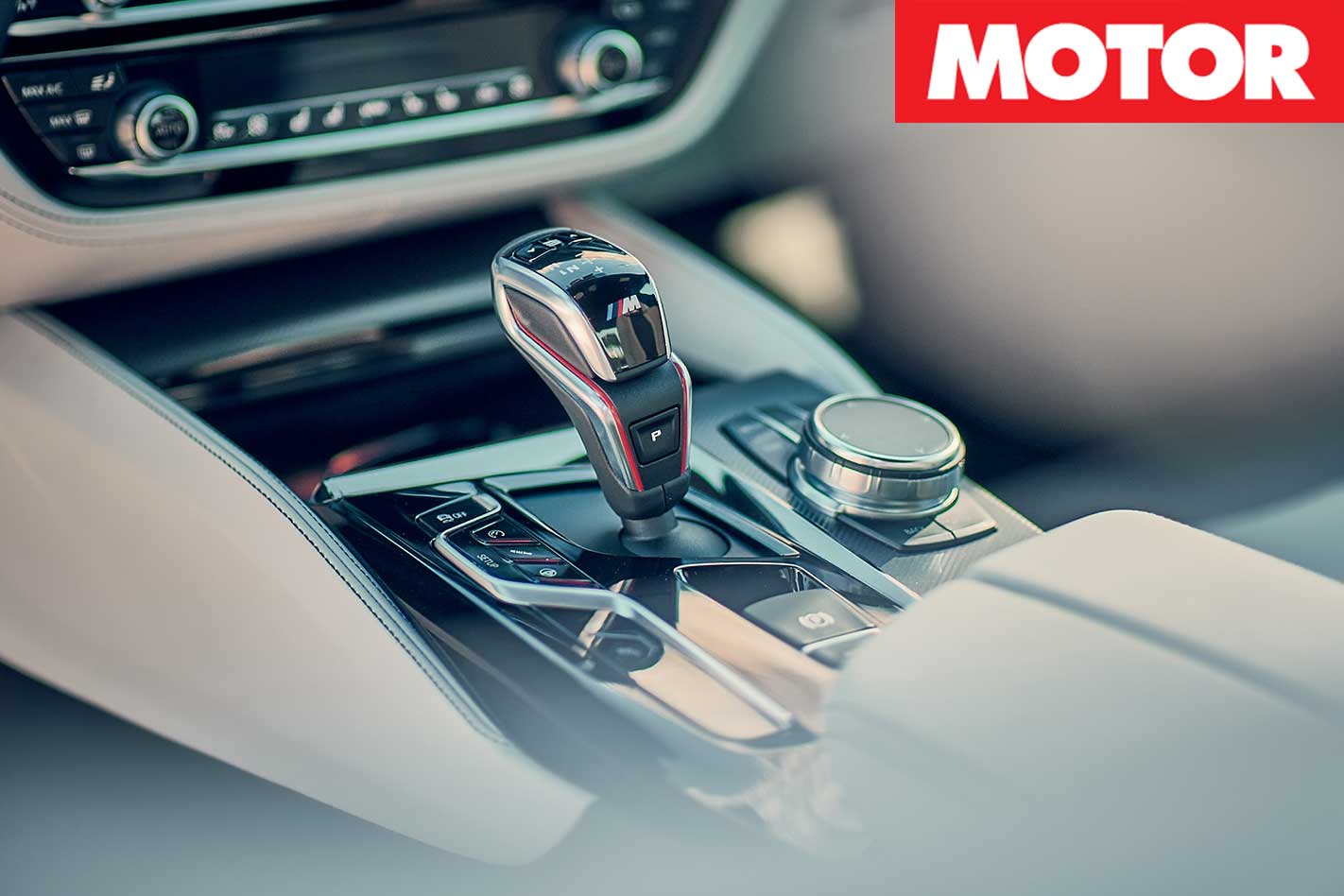
The E63 S is crammed with features – some nice to have, some thinly disguised gimmicks. Both boast about assistance systems which allow you to take your hands off the wheel, however, it’s only briefly. In more ways than one, these two would be a case for less equals more. That’s less as in distraction, complexity and choice. BMW and Mercedes-AMG try to bundle all your preferred settings into one button (M1 and M2 buttons on the steering wheel for the former and an Individual mode for the latter). However, both are far too complex to get ‘just right’.
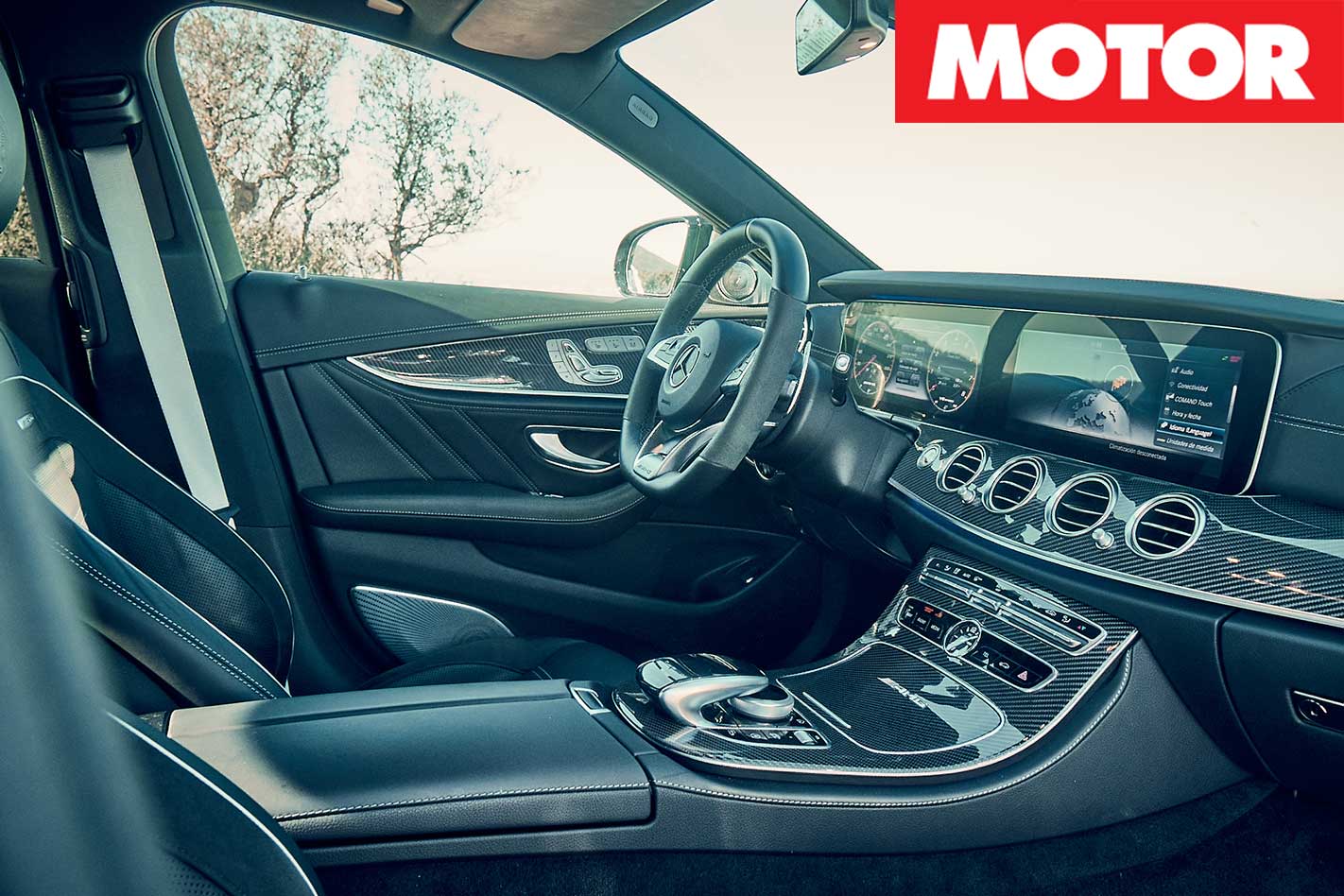
In contrast, the M5 looks less menacing – because it is. It comes across as the more pragmatic (if an M-car ever could be) driving machine that’s also sweeter at the limit, always tactile and composed as well as being a tad more compliant. Surprisingly, it is pleasantly relaxed at five tenths, yet totally switched on when it really matters most. It wins, but only just.
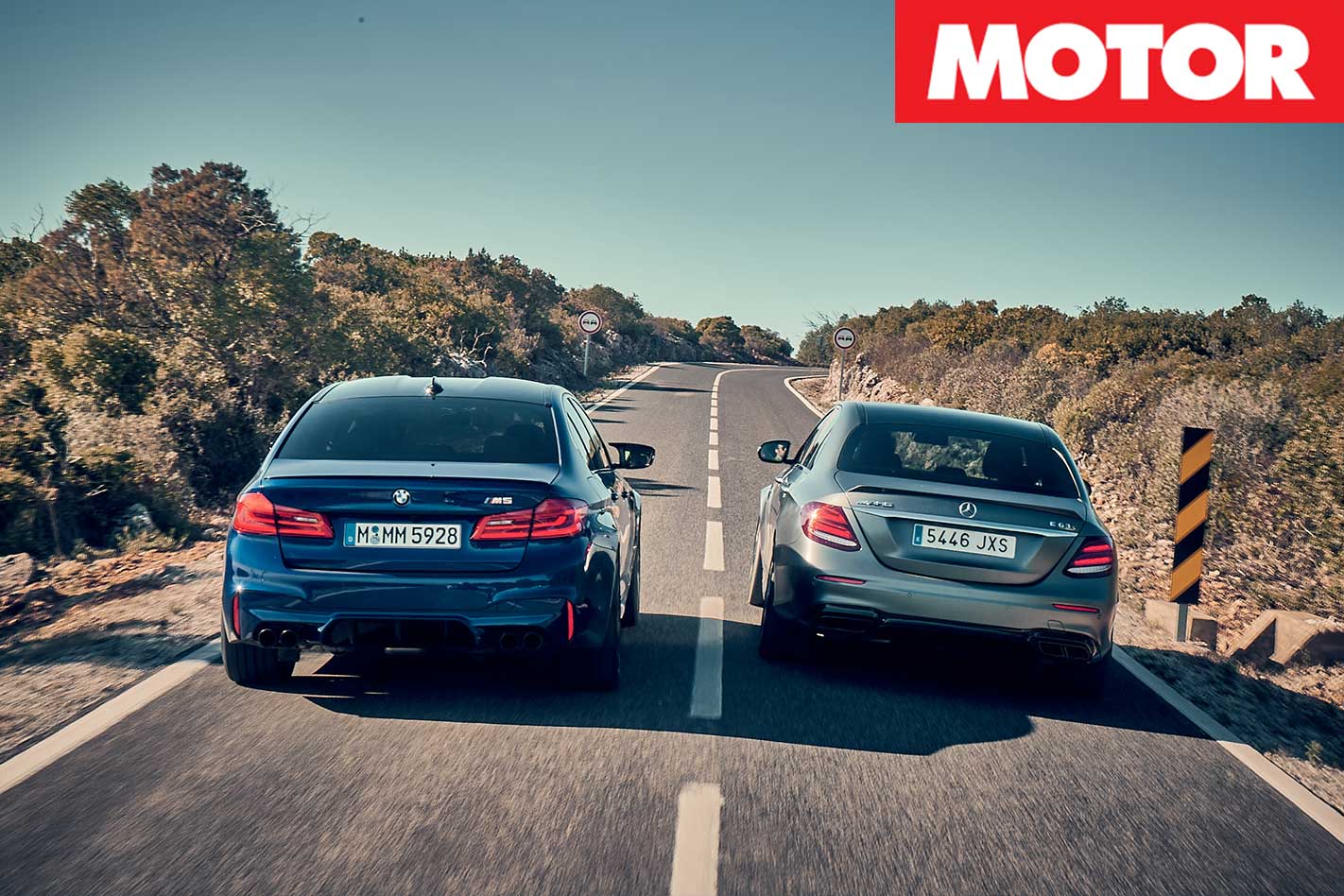
| u00a0 | 2018 BMW M5 | 2018 Mercedes-AMG E63 S |
| BODY | 4-door, 5-seat sedan | 4-door, 5-seat sedan |
| DRIVE | four-wheel | four-wheel |
| ENGINE | 4395cc V8, DOHC, 32v, twin-turbo | 3982cc V8, DOHC, 32v, twin-turbo |
| BORE/STROKE | 89.0 x 88.3mm | 83.0 x 92.0mm |
| POWER | 441kW @ 5600-6700rpm | 450kW @ 5750-6500rpm |
| TORQUE | 750Nm @ 1800-5600rpm | 850Nm @ 2500-4500rpm |
| POWER/WEIGHT | 238kW/tonne | 230W/tonne |
| TRANSMISSION | 8-speed automatic | 9-speed automatic |
| WEIGHT | 1855kg | 1955kg |
| SUSPENSION | double A-arms, adaptive dampers, anti-roll bar (f); multi-links, adaptive dampers, anti-roll bar (r) | four-link axle, air springs, adaptive dampers (f); multi-links, air springs, adaptive dampers (r) |
| L/W/H | 4665/1903/1473mm | 4993/1907/1460mm |
| WHEELBASE | 2982mm | 2939mm |
| TRACKS | 1626/1595mm (f/r) | 1649/1595mm (f/r) |
| STEERING | electrically assisted rack-and-pinion | electrically assisted rack-and-pinion |
| BRAKES (f) | 395mm ventilated carbon-ceramic discs, 6-piston fixed calipers | 390mm ventilated carbon-ceramic discs, 6-piston calipers |
| BRAKES (r) | 380mm ventilated carbon-ceramic discs, single-piston floating calipers | 360mm ventilated carbon-ceramic discs, single-piston calipers |
| WHEELS | 20.0 x 9.5-inch; 20.0 x 10.5-inch (f/r) | 20.0 x 9.5-inch; 20.0 x 10.0-inch (f/r) |
| TYRE SIZES | 275/35 ZR20 (f); 285/35 ZR20 (r) | 265/35 ZR20 (f); 295/30 ZR20 (r) |
| TYRE | Pirelli P Zero | Continental SportContact 6 |
| PRICE | $199,900 | $239,611 |
| PROS | Performance; handling; steering; value equation | Crazy straight-line pace; epic sound; defies hefty weight |
| CONS | Doesnu2019t sound/look as angry as Merc; limited numbers | Tech overload (so is M5); ultimately not quite as sharp |
| RATING | 4.5 out of 5 stars | 4.5 out of 5 stars |

